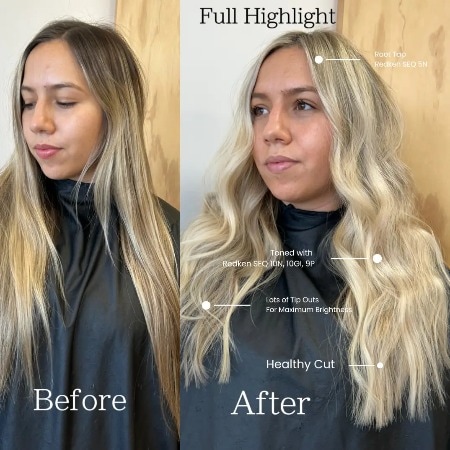
Root Tap 101: Everything You Want Know, Plus Comparison
Root tap is one of the options in the world of hair root bleaching that aims to blur the line between hair highlights and natural color. Root tap hair can add texture and depth to the overall makeup. Its popularity shows that today's fashion seekers are pursuing and accepting natural makeup. If you are interested, let’s take a look at this great way to refresh your look.

Ins: @taya.hair
What Is a Root Tap?
Root tap is a technology that can subtly soften the dividing line between hair dyeing and can smoothly transition the natural hair growth space without requiring regular maintenance. The specific method is to apply a small amount of hair dye to the roots of the hair. If you know root smudge, you can think of root tap as a mini version of root smudge.
There are two points to note here:
◆ First, apply it only to the roots of the hair, about one to two inches in size
◆ Second, the color of hair dye is usually chosen to be similar to the natural hair color.
Root Tap Before and After

How to Do a Root Tap at Home?
This is a tutorial for DIY root tap on blonde hair at home, if you want to get a more professional root tap formula, a hair salon is a better idea.
◆ Part your hair in the middle and use a rat tail comb to divide a small section of hair, and use zig zag to divide it twice.
◆ Place the parted hair on the foil and use a brush to evenly apply bleach to two to three inches.
◆ Fold the tin foil and keep it for a while. Repeat this step to apply to all hair roots, and finally wash off with water.
◆ Then apply hair dye similar to your natural hair color to the roots of your hair, and comb it with a comb to make it look more natural.
◆ I recommend applying color to the roots, layer by layer. In the end, you can achieve a beautiful and natural blonde ombre effect.
Differences Between Root Tap, Root Shadow, and Root Melt
Before you head to the salon, it's a good idea to understand the differences between root tap, root smudge, and root melt. To the uninitiated, these sound very similar. In fact, to put it simply, the main difference between the three is that the dyeing range of the hair roots is inconsistent. The only difference between the three is how far the mixture is applied, and there is a clear diagram below.
Root Tap vs Root Smudge
Root smudge and root shadow are often used interchangeably, and the subtle differences between the names vary according to region and custom. Root smudge is typically applied three to five inches from the roots of your hair downwards, while root tap hair is applied more subtly, as mentioned above, only an inch or two from the roots of your hair.
In addition, root smudge or root shadow is more creative. Not only can it be used to transition your natural hair color, but it can also add contrast to your hair, creating a strong, rich pop of color. For more information, check out: Everything You Need To Know About Root Smudge.
Root Tap vs Root Melt
As its name suggests, root melt has the most natural transition and the widest application area of the mixture. This low-maintenance look completely erases the line between dyed and natural hair, making it difficult to distinguish between your natural base color and highlights.
When doing root melt, we usually choose a tone that is the same as the natural base color of the hair or a darker tone, and the mixture needs to be left on for about 15-20 minutes to create a more lasting color.
For me personally, root tap, root shadow, and root melt overlap, and because of this, I think the combination of these three can create the most flawless and seamless color.
More Articles
Root Perm 101: A Stylish Twist to Your Hair Routine
